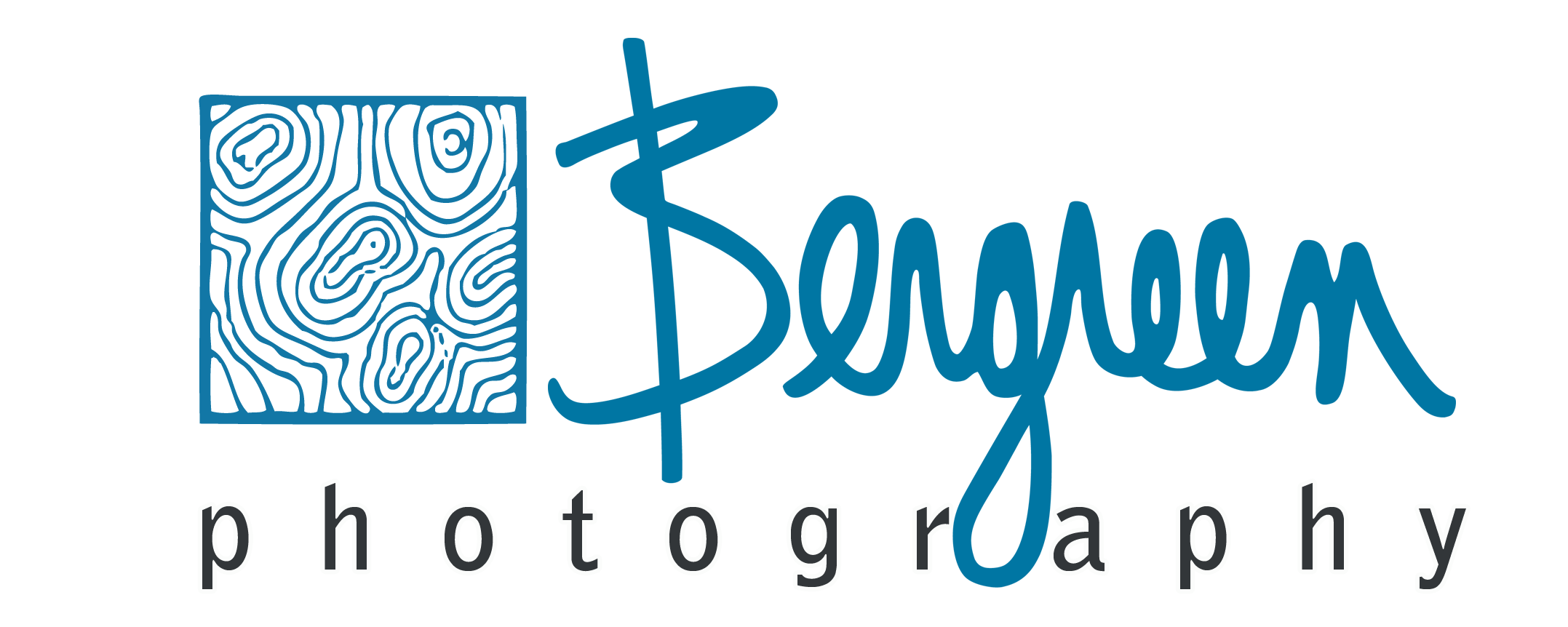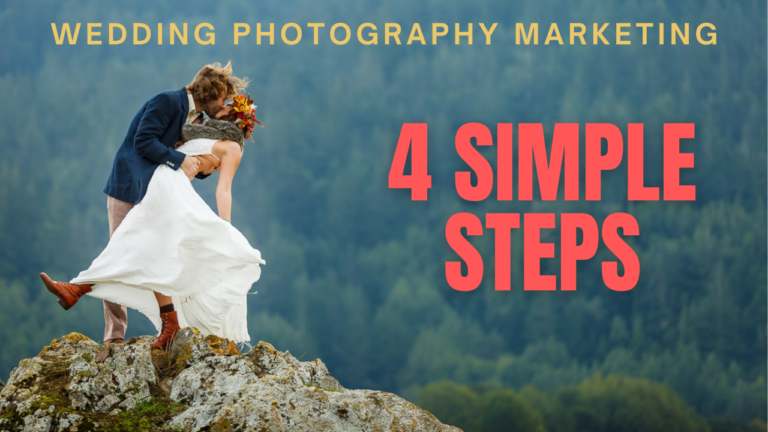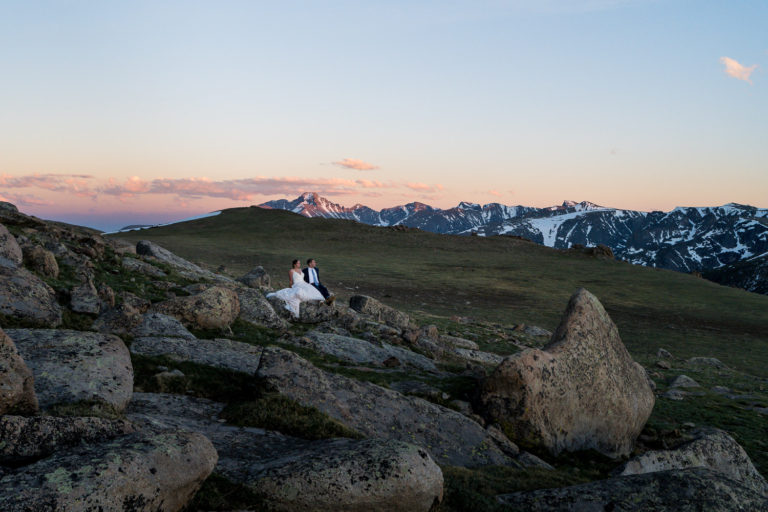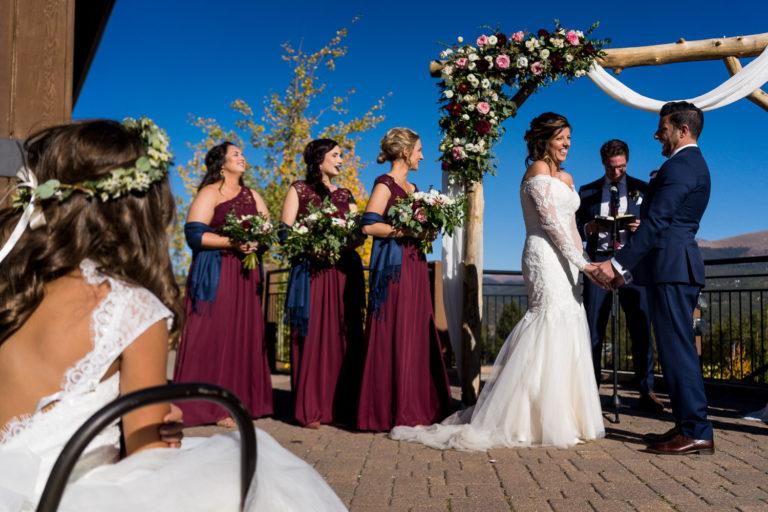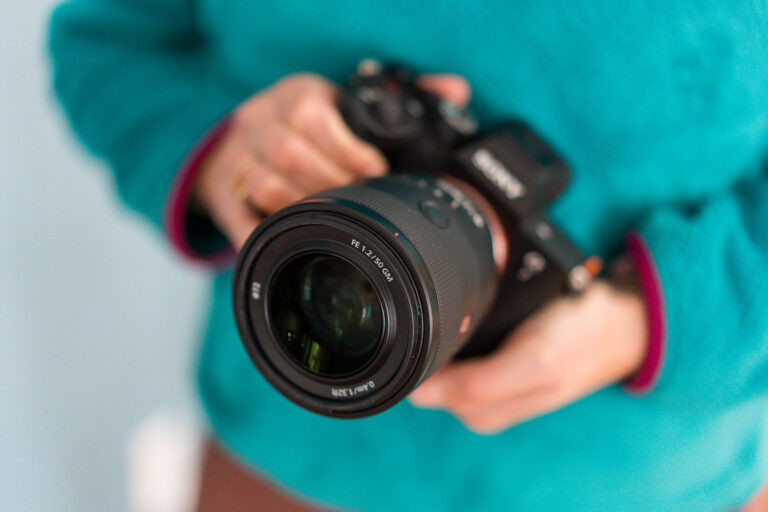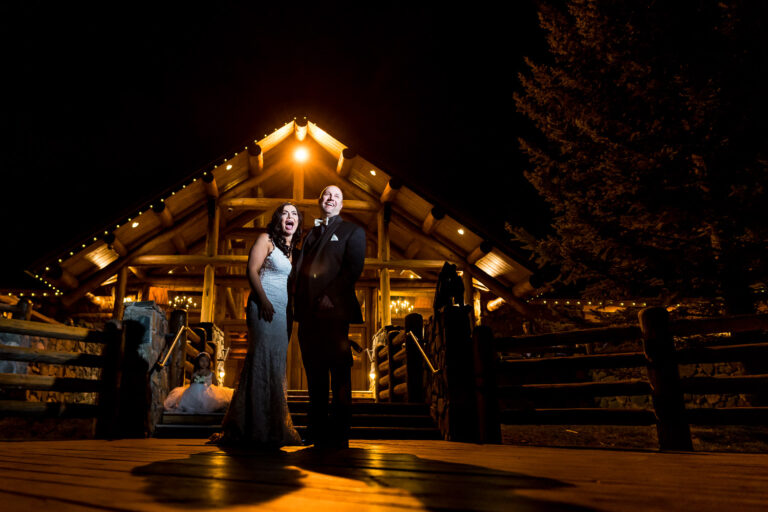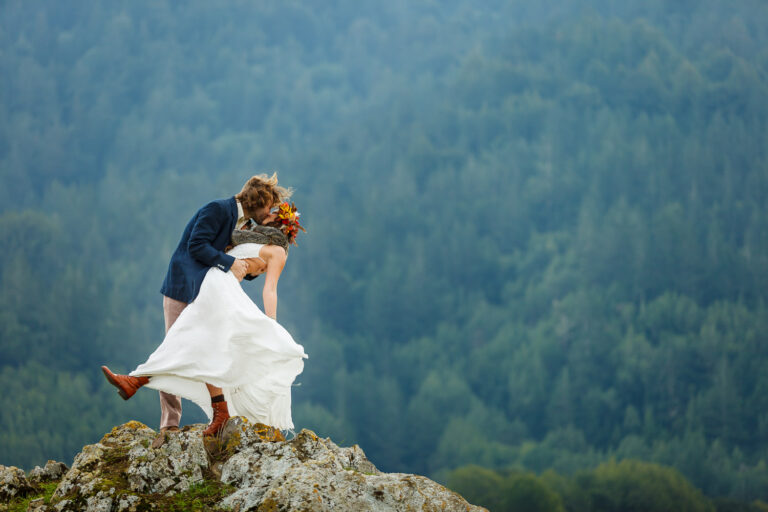Minimalist Wedding Photography Gear Checklist
You can never have enough gear. And yet, it’s possible to have too much gear. That’s why we’ve put together this minimalist wedding photography gear checklist. (Not to be confused with the shot list!)
As wedding and adventure photographers, we like to be light and fast. There’s nothing like missing a moment because we were messing with too much gear. We also travel a lot which means we need a kit that is mobile. Also, being in the mountains, we need one that is rugged.
How little gear can you get away with?
In making this gear checklist, we tried to think about what we actually use. How many lenses do you carry? And how many do you actually use? How many bags do you bring? How many do you need?
At most weddings we have more gear with us, but sometimes we’re in a remote destination for a portion of the day. So what do we need to have without compromising the quality of photos that we take?
minimalist wedding photography gear checklist
- two reliable, durable, dual card slot camera bodies (our pick)
- one telephoto zoom lens (our pick)
- one wide-angle zoom lens (our pick)
- one mid-range fast prime (our pick)
- a durable camera backpack (our pick)
- flash and flash trigger (our pick: flash/trigger)
- lightweight light stand (our pick)
- camera strap or spider holster (our pick: strap/holster)
- polarizing filters (our pick)
Here’s our kit with more details below:
our minimalist wedding photography kit
The links to products found here and at Kit.co are affiliate links. They help support us in writing/sharing more content. We appreciate your support!
1. two reliable, durable, dual card slot camera bodies (our pick)
We love having the flexibility of two camera bodies: a primary camera body and a spare. However if we are going superlight, we will each take one. If you are a solo photographer I suggest bringing two camera bodies wherever your shoot takes you. If one gets dropped or malfunctions, you wouldn’t want your whole shoot to be ruined. Nothing is worse than an error screen in the middle of your shoot, trust me, I’ve been there but luckily we had a backup camera body!
Along the same lines, a camera with two card slots has become an important factor. We like the instant backup of having two copies of our data. Back before having a mirrorless camera and dual card slots, we paid hundreds of dollars to recover one of our memory cards that got corrupted on a shoot. Don’t let that happen to you!
And lastly, it’s important to use a reliable & durable camera body. I am a big advocate of knowing your equipment well.
With that in mind, I would strongly encourage you to test/use your equipment on multiple shoots before using it on a shoot. Taking that new camera out on a paid gig is tempting but it’s always troubling when you run into an error or forgot to change an important setting like shooting in RAW instead of JPEG. Wedding photography cameras need to be well tested!
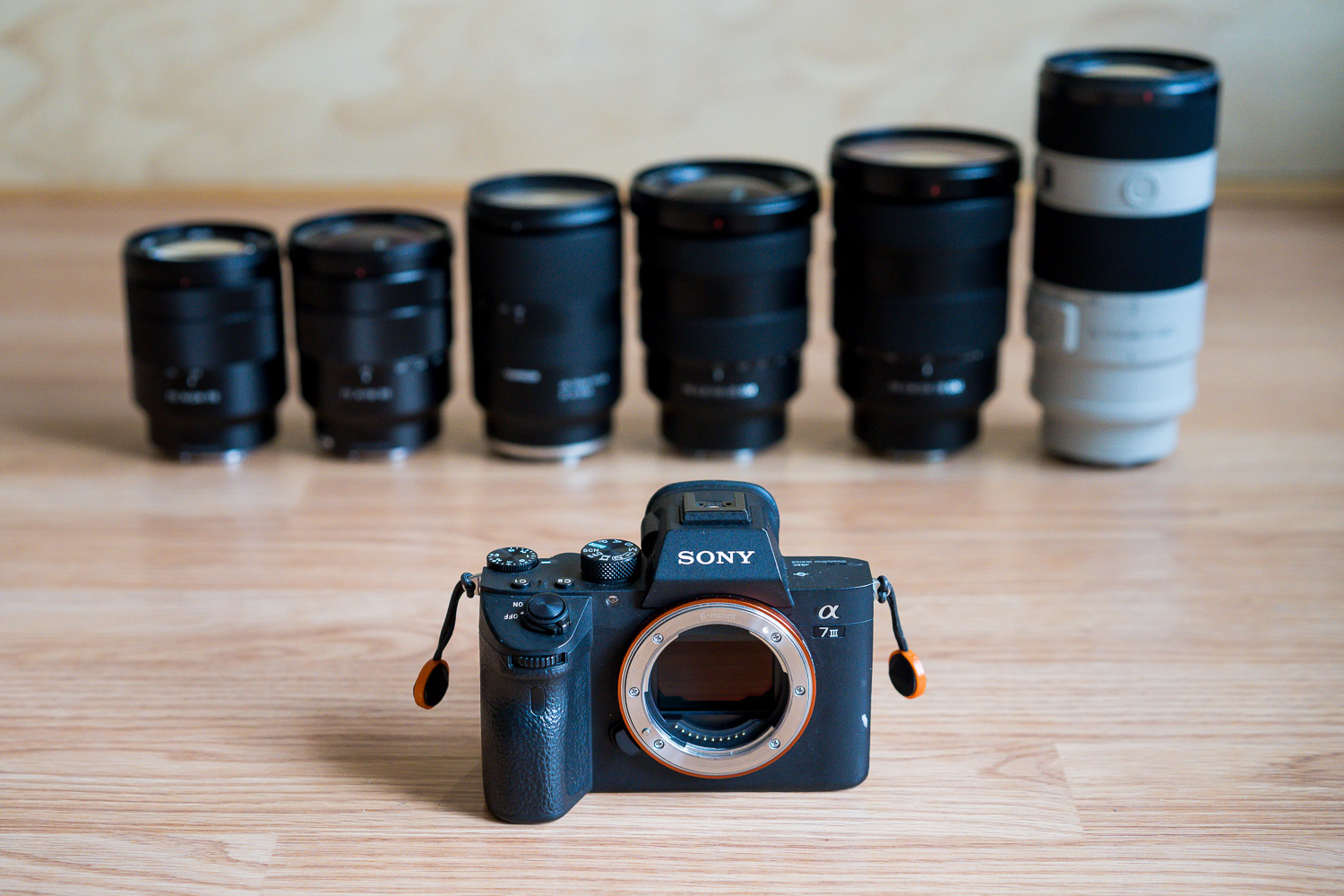
2. one telephoto zoom lens (our pick)
The telephoto zoom lens of choice for many photographers, us included, is the 70-200mm. It is versatile, very sharp, and does a great job creating compression. For more about shooting with a 70-200, head over to our youtube channel!
This lens is essential for so much of the day. It’s awesome for portraits, ceremonies, and capturing candid moments from a distance. We typically opt for an f/4 version instead of and f/2.8 version which forces us to switch to prime lenses in really dark locations but I think the cost/weight savings is a good tradeoff. Outside between sunrise and sunset, the f/4 lens will work very well and if it’s starting to get dark, pull out an off camera flash. Whether it’s natural light to off camera flash, this lens often stays in our camera bag for every shoot because it’s so useful!
3. one wide angle zoom lens (our pick)
For our style of photography, the wide angle lens is essential. We use the Sony 16-35mm f/2.8 GM. It is super sharp and gives you the flexibility of shooting super wide landscape style images or using it zoomed in to 35mm for a more traditional documentary style lens. At 35mm this lens is great because it doesn’t have much distortion (no bent horizons or misshapen faces). It gives a perspective similar to what the human eye sees which can be very pleasing to viewers.
Many wedding photographers love wide angle zoom lenses because it is so versatile. It allows you to get close to your subject or back up to show the whole scene. Even when we’re pairing down to the bare essentials, this lens goes in the bag.

4. one mid-range fast prime (our pick)
Many people like the flexibility of shooting with a mid-range zoom but we have always opted to use a 50mm prime instead, especially when we’re going light on equipment. It isn’t as flexible as a 24-70mm lens but it does encourage you to shoot more decisively and zoom with your feet. Usually, you can find an inexpensive 50mm lens and it is much better in low light than a 24-70 zoom. Also, we have both ends of the 24-70mm range covered by using a 70-200mm lens (see #2 above) and a 16-35mm lens (see #3 above).
Additionally, prime lenses are great for low light and creating background blurr or bokeh. Most 50mm prime lenses will be in the f/1.2 to f/1.8 range giving you tack sharp subjects and beautifully blurred backdrops. Pair a compact 50mm with one of your mirrorless cameras and you’ll have a powerful yet lightweight setup.
5. a durable camera backpack (our pick)
This has become one of our most trusted pieces of gear. It keeps everything else in our bag safe. We opt for a semi-waterproof adventure style camera bag that ensures all our equipment is safe even in a storm. Another advantage of a quality camera bag is having a proper suspension system that won’t hurt your back when you have to carry it all day or hike long distances. The other consideration is what things need to fit in your bag besides cameras (i.e. snacks, water, headlamp, warm clothes, etc).
We also love bags that open from the front so that you can set your camera down in the snow/mud without having to worry about your clothes getting dirty when you put it back on. As a wedding photographer you’re likely to be moving quick so you don’t want to worry about where you can set down your bag.
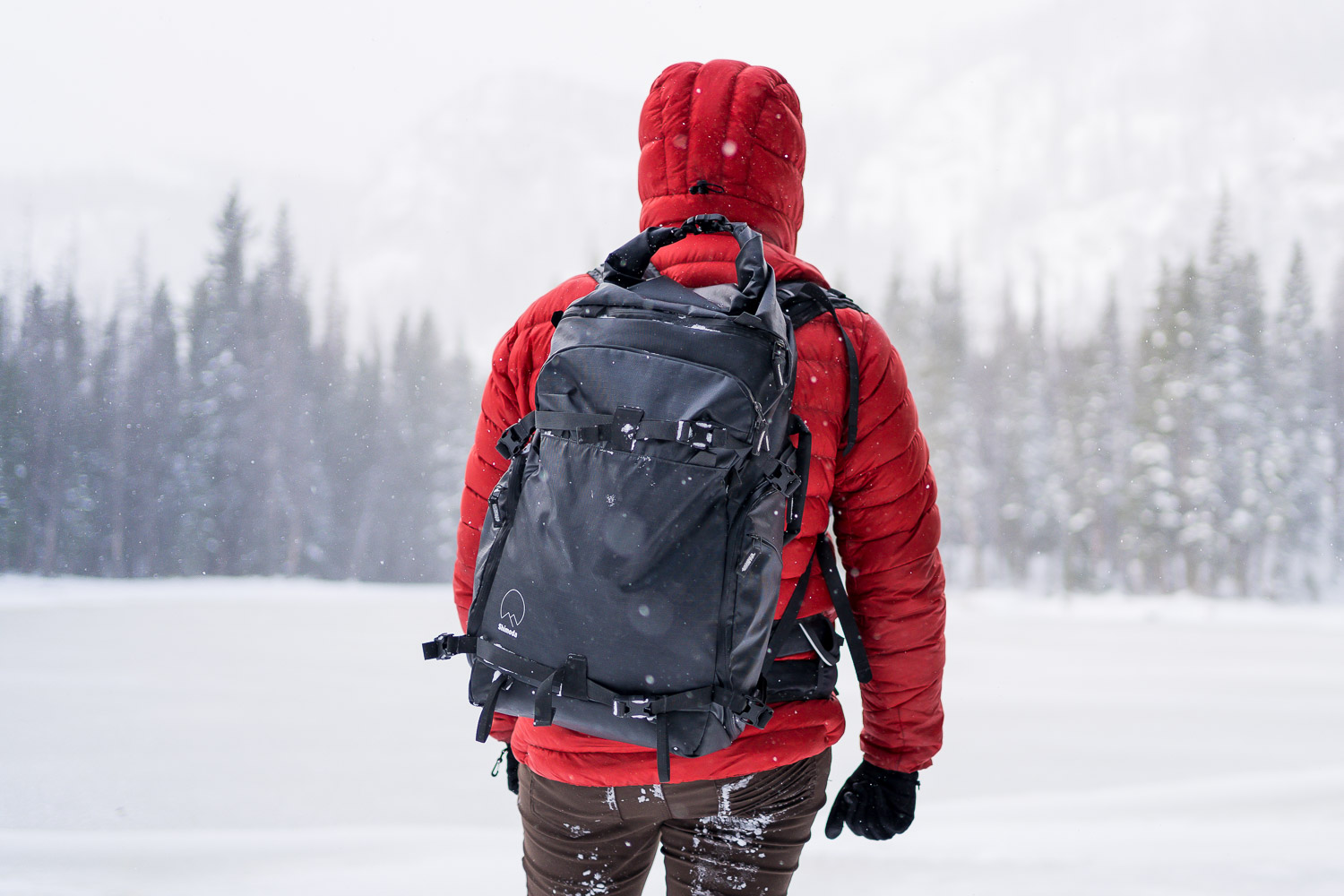
6. flash and flash trigger (our pick flash/trigger)
Having the ability to add our own light when needed is very helpful. It allows us to create better images in bad light or get more creative when we think a photo could benefit from having some artificial light. We have been using the Godox AD200 and wireless trigger for several years and it has met our needs. It’s not the most durable system (you might want a backup trigger) but it is the best value and works great for our needs.
The AD200 is much more durable than the flash trigger. Luckily, the somewhat flimsy trigger is pretty cheap so having spare is not very expensive. Wedding photographers are not known for being gentle on their gear but be gentle with this if you can.
7. lightweight light stand (our pick)
Carrying a stand with us allows us both to shoot at the same time. Previously, we would ditch the light stand when traveling light but having it with us allows each of us to work more independently. After we set it up, nobody is forced to be a human light stand 🙂
We have various sizes of light stands but the compact travel stand comes with us wherever we go. It’s not very heavy when compared with other wedding photography gear and it’s quite durable. Just be careful to balance it because it is not nearly as sturdy as larger stands.
8. camera strap or spider holster (our pick: strap/holster)
We use both of these options regularly. The camera strap is great when we are near a cliff edge or over water where dropping a camera would be catastrophic. If we aren’t concerned about dropping the camera, the spider is super fast, rather inconspicuous, and keeps the weight of the camera on our hips instead of on our neck! We love that we can quickly unsnap our peak design camera straps to switch over to the spider holster.
The spider holster has been a favorite among wedding photographers for years. It originally came with a comfy albiet ugly belt. Soon after getting our first holsters in 2012, we opted to ditch the big nylon belt and use a more traditional belt. After all, as a wedding photographer, party of your job is to look nice.
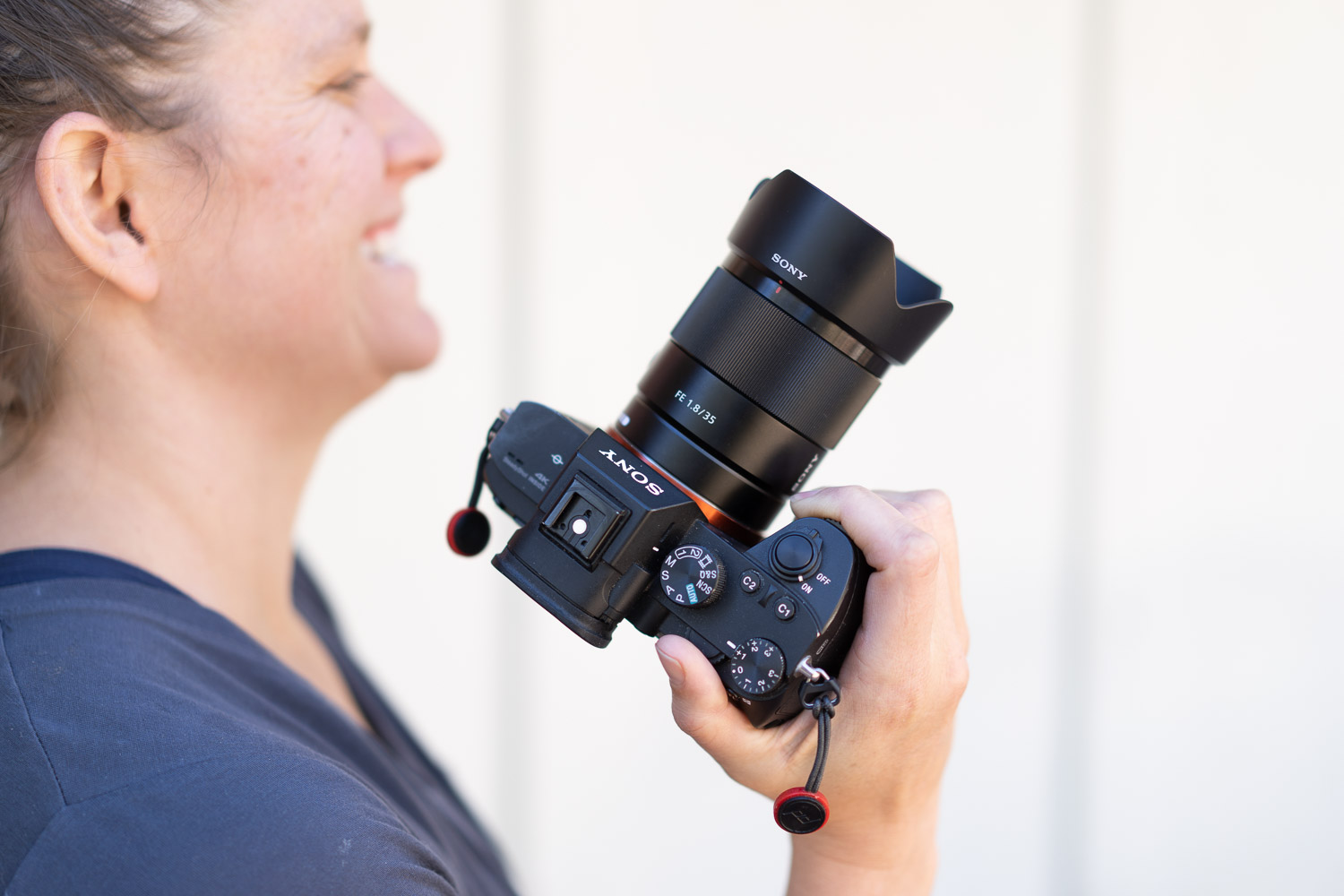
9. polarizing filters (our pick)
Using a polarizing filter is highly underrated when it comes to wedding photography. They are very effective at cutting glare in all sorts of situations (i.e. grass, trees, windows, etc). People often think of them for water glare in landscape photography, but we use them to give a more saturated and vibrant glare-free look in almost all of our daytime images. To get the most saturated blue sky with a polarizer, shoot at a 90 degree angle to the sun.
As a wedding photographer, making your images stand out is critical. You want the best possible in camera image and polarizers are key to making that possible.
Check out all the above items in our kit!
Hope you enjoyed this minimalist wedding photography gear checklist. From zoom lenses to full frame mirrorless cameras there can be a lot of pressure to get all the equipment at once. It’s important to remember that lots of amazing images can be made with one of your zoom lenses, one camera body, and a few spare camera batteries. Most wedding photographers start with a bare bones kit and add to it over time, we highly recommend this path. Sure you can buy a all the zoom lenses, a portrait lens, a macro lens, and incredible top of the line camera but all that gear might just slow you down. Get a basic wedding photography gear checklist and aim to get the essentials for a wedding day!
Feel free to reach out if you have questions about the gear we use for wedding photography and videography. We’ll happily share drone tips and accessories. We also have the basics like the exposure triangle.
more posts
We have more to share coming soon. Be sure to join our newsletter below to keep up with fresh content, let us know what you want to hear, and get our free Build Your Life e-guide.
Recent Building a Life and Tips for Wedding Photographers you might enjoy:
- How to Start and Wedding Photography Business in 5 Simple Steps
- Tips for Beginner Wedding Photographers
- Our 9 Best Outdoor Wedding Photography Tips
- Creative Mindset Discovery and Growth
- Creativity Test | Either you’re creative or…
- Searching for Equanimity | Creative Business Owner and Mom Seeks Calm Mind
- Wedding Photography in the Rain
- Camera Settings Guide
- How to Price Wedding Photography
thanks for stopping by
We are Marc and Brenda Bergreen, a husband and wife photography team specializing in outdoor weddings and other adventures. Capturing people in nature and the mountain lifestyle is a passion that became a dream that became a life.
We don’t link to a lot of things but when there are books or gear we love we’ll share it and links to Amazon other retailers are often affiliate links.
Based in Evergreen, CO we travel throughout the state to Vail, Breck, Rocky Mountain, and more as Colorado adventure wedding photographers. We also frequently travel to California and other wedding destinations to document love and adventure in a variety of memorable settings. Don’t hesitate to contact us and let us know how we can help! Be sure to follow us (weddings instagram & adventures instagram) and/or like us (facebook) to stay tuned.
In the meantime, remember to…

